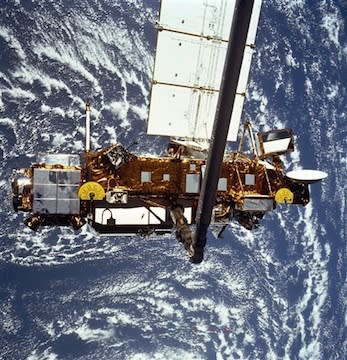 The Lookout
The LookoutScientists will give two hours warning before six-ton satellite falls

NASA says a giant, defunct satellite making its way toward earth will hit late Friday or early Saturday morning. The only problem is, they don't know exactly where yet.
According to the Telegraph's Andy Bloxham, the 6.5-ton, 35-foot Upper Atmosphere Research Satellite is traveling at a pace of five miles per second. In fact, because the space junk is hurtling so rapidly, scientists will most likely be able to give people in harm's way only a 20-minute warning, the Telegraph says.
But NASA spokesman Stephen Cole disputed that figure to The Lookout, saying that NASA will be able to tell people two hours in advance approximately where the debris will fall.
Even given this very short warning time, there's only a one in 3,200 chance anyone will actually be hit by the debris, experts say. No one has ever been hurt by falling space materials before, but NASA was fined $400 when a piece of Skylab, the first American space station, fell on a Western Australian town in 1979. NASA never paid it.
NASA says it's unlikely that the satellite will hit North America, but they can't rule out that possibility. They say it's also very unlikely anyone will get hurt--even though its "debris footprint" will be 500 miles long--because so much of the planet is uninhabited.
"There's always a concern," Mark Matney, a scientist at the Orbital Debris Program Office, told Space.com. "But, populated areas are a small fraction of the Earth's surface. Much of the Earth's surface has either no people or very few people. We believe that the risk is very modest."
